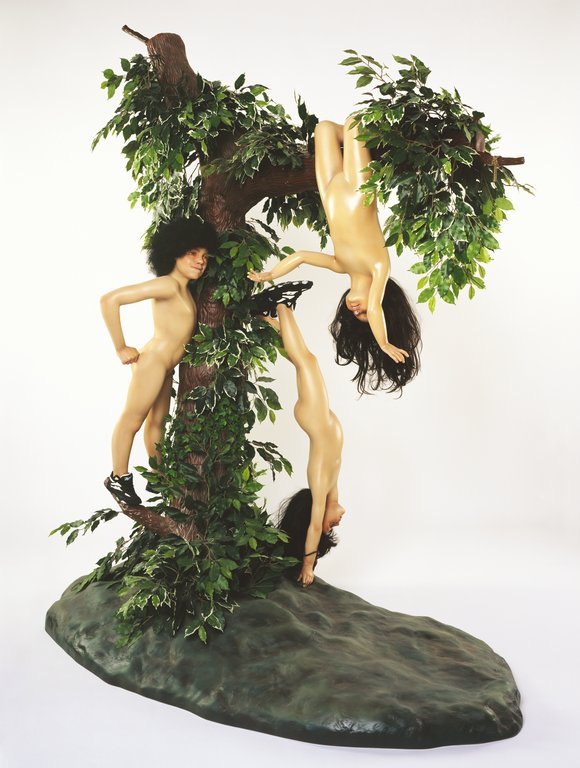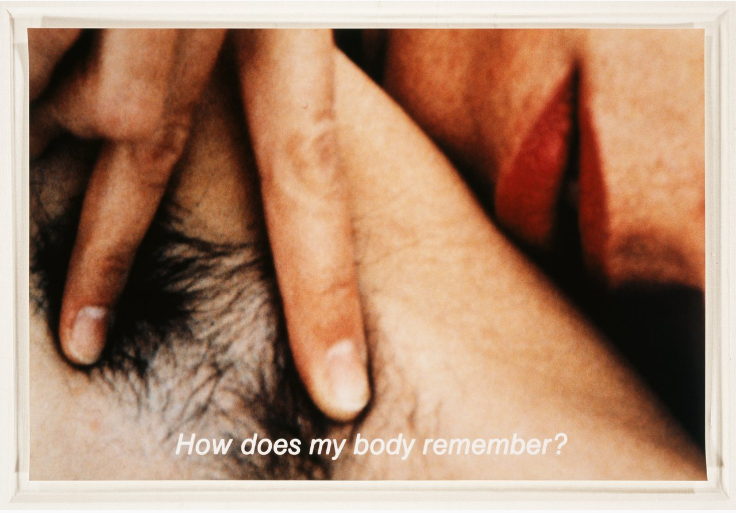
Dinos and Jake Chapman, Year Zero (1996), from the exhibition Selections from the Permanent Collection, Walker Art Center, Minneapolis, December 8, 1996 to April 4, 1999. Copyright 1998 Walker Art Center
I’m going to tell you a story because it’s the human thing to do. And yeah, this story is autobiographical, but I only tell it to see if it strikes a chord in you. Like: “Have you been in my shoes? Do you recognize these shoes? Can I try on your shoes? Those are way-cool and I bet they make you jump high.”
When I was a junior at a small liberal arts school which shall remain nameless, I had two life-changing conversations. To be honest, they weren’t so much conversations as shutdowns — brief and dismissive encounters, like when a bully slaps the lunch tray out of your hands — the sort of “conversation” that leaves you with little comeback and covered in ketchup.
But they mobilized me. I was pursuing a degree in English and biology at the time, and I naively thought the disciplines spoke to one another. You know, because we’re all just looking for answers.
One day in 20th-Century American Lit, I offered up a science-oriented analysis of a William Carlos Williams poem. No matter how you feel about the man’s literary work, Willie Twotimes was undeniably a man of both science and the humanities. He was a poet, but also a family doctor — the kind of doctor who used to visit people in their very own beds, hold his stethoscope to their laboring chests and, presumably, try not to think about death (as poets are wont to do). I don’t remember the details of my disquisition, but I do recall clearly the change in my classmates as I leaked un-literary vernacular onto the discussion floor. I remember their lifted chins and nose-long glances that meant, in college-speak, You don’t know what you’re talking about. (Our fearless professor sat back to let us battle it out.)
One fellow student who shall remain nameless blurted: “Do you really think that science has to do with any of this?”
This? I thought. My heart sank. This… meaning life?

Mieko Shiomi, Spatial Poem (No. 4). Off-set lithography on paper, 1976. Courtesy of the Walker Art Center.
Shift your view, if you would, to a biology classroom elsewhere on that campus, another day, not long after. I had presented — well, I thought — on the subject of sperm whales. I’d even managed to slip in a joke or two. I mean: sperm whale, c’mon. They call them that for a reason, and it’s not an unfunny one.

Eadward Muybridge, Baseball, Batting Plate #274 from Human and Animal Locomotion. Collotype on paper, 1887. Courtesy of the Walker Art Center.
I’m not one to haggle over grades — really, truly — but when our presentation scores came back, I was surprised to find a little minus sprouted from the A like a skin tag. I asked why. I couldn’t help it. My professor, who shall remain nameless, shifted and cleared his throat. “Humor really has no place in a scientific presentation,” he said.
And this time, instead of sinking, my heart ignited with defiance. No place? (What?) Why not? After days of watching classmates dryly point at population diagrams, it had never occurred to me that lightening the load for my audience for the sake of better communication of information might be frowned upon.

Ranjani Shettar, Invitations (detail). Cloth, resin, synthetic cotton, 2000. Courtesy of the Walker Art Center.
Last month, coincident with the 2013 Human Brain Mapping conference in Seattle, curator Noah Hutton put together Subjective Resonance Imaging, a show that explores the human brain from the artists’ perspective. As Hutton told the science journal Nature:
If minds accept the ways and teachings of art just as readily as they accept those of science, and vice-versa, new things can happen: it’s always valuable to include more points of observation in any field of view.
My thoughts exactly. And we are not alone. In 2011, neuroscientist Daniel Margulies of the Max Planck Institute for Human Cognitive and Brain Sciences founded a cross-disciplinary brain imaging contest (the idea for which started as a joke in a bar, I’ll have you know). As he explains to Scientific American:
We wondered, ‘What could we do that would bring everyone to the table, even artists?’
Indeed. It’s just that spirit of what if which illuminates the commonalities between art and science. To put it all in an overly simple equation: science=knowledge=understanding=communication=art.
Even Albert Einstein (that violin-playing softie) addressed this notion:
The most beautiful thing we can experience is the mysterious. It is the source of all true art and science.
Bringing art and science into conversation together fecundates each, and a bounty of knowledge results. I’m going to try and do just that, right here, from time to time.
What about you? Game to join me? Are you willing to let your peas and carrots mix?
Maggie Ryan Sandford is a science journalist, fiction writer, performer, and media producer who has devoted her life to promoting widespread scientific literacy. Her work has been published in Slate, Smithsonian, mental_floss, the Onion A.V. Club, Paper Darts, Revolver, Thirty Two, the Indiana Review online, McSweeney’s Book of Politics and Musicals, and she has appeared at the Walker Art Center, the Seattle Art Museum, the Minnesota Institute of Arts, the Guthrie Theater, the Upright Citizen’s Brigade Theatre NYC, and on National Public Radio and Twin Cities Public Television. She was named champion of both Literary Death Match 100 and Revolver magazine’s recent “Write Fight,” and is part of the bimonthly storytelling group Rock Star Storytellers. More at MaggieRyanSandford.com.






















